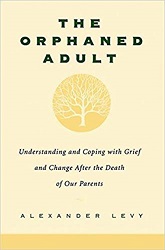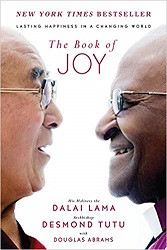 The State of Affairs
The State of Affairs
Rethinking Infidelity
by Esther Perel
Harper, 2017. 320 pages.
Review written June 3, 2019, from a library book
I’m not completely sure why I read this book. A library customer had me put it on hold for her, and it sounded interesting to me, so I put it on hold, too. And then it wound up on the top of my huge nonfiction-books-to-read stack, and it really did fascinate me.
Of course, my initial reason to be interested in the topic is that my own marriage ended after my ex-husband had an affair for a year and a half. The number of lies it took to pull that off ended up shaking my whole sense of reality when I finally found out.
I’m not sure this book gave me a whole lot of insights about that affair, though I did have the ability to understand a little better why some people have them. The fact that I could read this book at all without being overwhelmed by pain or anger says to me that I’ve come a long way in my healing process!
You won’t be surprised when I say this book is not written from a Christian perspective. From my perspective, adultery is wrong, and that’s pretty much all there is to say about it. It deeply wounds someone you’ve promised to love. However, because this author approaches it without judgment – she can find out much more that’s going on under the surface.
She doesn’t judge, but she still doesn’t recommend having an affair. She put it this way:
While I prefer to sidestep flat-out condemnation to allow for a thoughtful inquiry, I do not approve of deception or take betrayal lightly. I sit with the devastation in my office every day. Understanding infidelity does not mean justifying it.
In the Introduction, the author convinced me that it was worth reading on:
There is one simple act of transgression that can rob a couple of their relationship, their happiness, their very identity: an affair. Yet this extremely common act is poorly understood….
Affairs have a lot to teach us about relationships – what we expect, what we think we want, and what we feel entitled to. They offer a unique window into our personal and cultural attitudes about love, lust, and commitment. Through examining illicit love from multiple angles, I hope to engage you, the reader, in an honest, enlightened, and provocative exploration of modern relationships in their many variations. I would like to stimulate a conversation between you and your loved ones about issues such as fidelity and loyalty, desire and longing, jealousy and possessiveness, truth-telling and forgiveness.
I’m afraid she does destroy the idea of an “affair-proof” marriage. And she’s even looked at open marriages where affairs happened. She says that wherever humans set up rules, others will get a thrill from breaking them.
This reminded me of a concept I learned in the book Forgive for Good, by Dr. Fred Luskin: Unenforceable rules. He says that we make rules for our loved ones that we can’t enforce. Instead of saying, “My spouse must not cheat on me,” which you can’t enforce at all, he suggests, “I hope my spouse will not cheat on me.” Then your spouse’s faithfulness becomes a loving gift, rather than meeting a demand. Either way, though, I was reminded in this book – you can’t actually make your spouse do anything.
She explores many different sides of affairs in this book and how it plays out for all parties involved, in many different situations. At the end she’s got a section with the heading, “What Can Marriage Learn from Infidelity?” I’ll finish with some paragraphs from that section:
Some relationships die, some survive and revive. What are the lessons of infidelity, for all of us who love? I hope these pages have served to illustrate that affairs are many things, but at best they can be transformative for a couple. I began this book with the analogy that while many people have positive, life-changing experiences as a result of terminal illness, I would no more recommend having an affair than I would recommend getting cancer. What many people want to know, then, is what they can learn from affairs without necessarily having to go through one. It comes down to two questions: How can we better fortify our relationship against infidelity? And how can we bring some of the erotic vitality of illicit love into our authorized union?
The answer is counterintuitive. The impulse to protect your marriage is natural, but if you take the common “affair-proofing” approach, you risk heading back down the narrow road of stifling constraints. Outlawing friendships with the opposite sex, censoring emotionally intimate confidences in others, nixing water-cooler conversations, curtailing online activity, banning porn, checking up on each other, doing everything together, cutting off exes – all of these homeland security measures can backfire. Katherine Frank argues persuasively that the “marital safety narrative” creates its own demise. When a couple tries to safeguard their relationship through various forms of surveillance and self-policing, they risk setting themselves up for the exact opposite: the “enhanced eroticization of transgressions.” The more we try to suppress our primal longings, the more forcefully we may rebel….
Rather than insulate ourselves with the false notion that it could never happen to me, we must learn to live with the uncertainties, the allures, the attractions, the fantasies – both our own and our partners’. Couples who feel free to talk honestly about their desires, even when they are not directed at each other, paradoxically become closer….
We also learn from affairs that for most, the forbidden will always hold an allure. The ongoing challenge for steady couples is to find ways to collaborate in transgression, rather than transgressing against each other or their bond….
For Viola and Ross, it meant creating secret email accounts through which they could conduct private, X-rated conversations during meetings, playdates, and parent-teacher conferences. For Allan and Joy, it was occasionally leaving the kids with her mom and going out with no curfew. Dancing all night with a sense of unboundedness is the opposite of the regimentation of family life. Bianca and Mags can’t afford to go out, but they want to affirm that they’re not just parents. So once a week they put the babies to bed, light candles, dress up, and have a date at home. They call it “meeting at the bar.”…
Our partners do not belong to us; they are only on loan, with an option to renew – or not. Knowing that we can lose them does not have to undermine commitment; rather, it mandates an active engagement that long-term couples often lose. The realization that our loved ones are forever elusive should jolt us out of complacency, in the most positive sense.
On reflection, I was one of those people who thought that an affair could never happen in my marriage – and I was completely wrong. It’s tempting when I think about starting a new relationship to try to go into it with lots of “safeguards” in place. I think that’s something of what I gained from reading this book – a deeper understanding that people are people. I can’t make someone I love behave a certain way. But a deeper understanding of marriage and what people want out of it and what an affair does to that – is not a bad thing to have, not a bad thing to process.
In the end, this book is fascinating reading about people and relationships.
estherperel.com
hc.com
Buy from Amazon.com
Find this review on Sonderbooks at: www.sonderbooks.com/Nonfiction/state_of_affairs.html
Disclosure: I am an Amazon Affiliate, and will earn a small percentage if you order a book on Amazon after clicking through from my site.
Disclaimer: I am a professional librarian, but I maintain my website and blogs on my own time. The views expressed are solely my own, and in no way represent the official views of my employer or of any committee or group of which I am part.
What did you think of this book?









